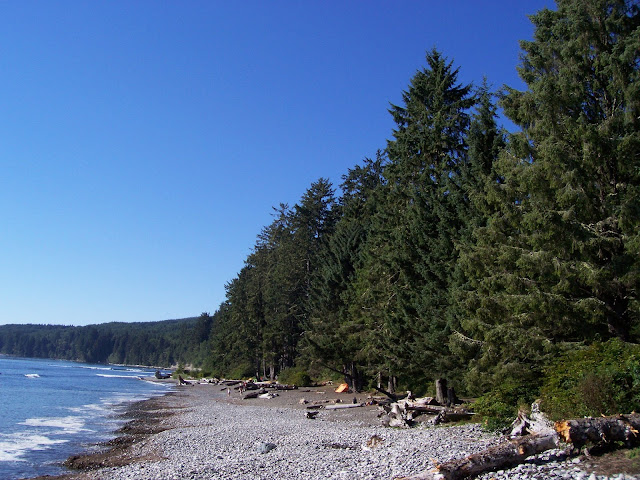 |
| The American Martin lives in Canadian forests from coast to coast. Destruction of forest habitat has reduced its numbers. |
Everyone likes a party, and this week is a nation wide celebration. National Forest Week asks Canadians to join in a celebration of our trees and forests. How could that be bad?
Unfortunately, most of the information I have seen online is geared toward viewing our trees and forests as "resources" to be used for the sole benefit of humans.
“Canadians can actively engage in this year’s National Forest Week theme by inviting foresters into the classroom to teach students about Canada’s world leading progressive forest management practices.
Students can also learn about the innovative green products that can be made from forest fibre such as cosmetics, car parts and clothing.” - Dave Lemkay, General Manager of CFA.
The slogan for this year highlights the importance of these forest resources, and focuses on extraction and jobs. The Canadian Forestry Association web site has a prominent headline stating "National Forest Week to Highlight 'The Greenest Workforce' Brand.
What kind of brand is this? Cutting the last of the old growth is not green by anyone's reckoning. In order for a renewable, sustainable cut in old growth forests you would need a harvest cycle of a few hundred years. Perhaps longer, and certainly much longer than a few decades.
Not mentioned anywhere is how many Canadian forests are being depleted, including those on Vancouver Island. The CFA was even created to address this very problem... back in the early 1900s. I am sure they have done, and continue to do good work, but this year's National Forest Week seems to have been hijacked by government and corporate interests.
 |
| American Martin range. |
This "celebration" seems to have a focus on advertising and support for the forestry industry. Sure humans need forests (it has been theorized that civilization would be impossible without them), but we are far from the only users of these "valuable resources".
Little is said about the importance of intact old growth forests for their life-giving services like filtering water, preventing erosion, and providing critical habitat for species that can't live anywhere else.
To celebrate this week take the CFA up on their challenge to learn more about what is happening in our forests. Chances are you may not like what you find out. From short rotation periods that create perpetual tree farms void of diversity, to cutting visual barriers established by rules that have been thrown out by the BC government, there is a lot that needs to be done to set things right.
After your research you may be interested in joining the real "Greenest Workforce" - they are called environmentalists, and most work as volunteers out of their deep love and respect for trees, forests and the species that live there.
Don't have time to get involved? Consider donating to an organization near you and have them do the legwork. The Ancient Forest Alliance is a good place to start. They are "a British Columbian organization working to protect the endangered old-growth forests of BC and to ensure sustainable forestry jobs in the province. It was founded in January of 2010 and is run by BC environmental activists Ken Wu, TJ Watt, Joan Varley, and Hannah Carpendale."
Happy Forest Week. Wednesday is designated as National Tree Day, so get out there and hug your favourite tree or trees. We tend to protect what we love.








